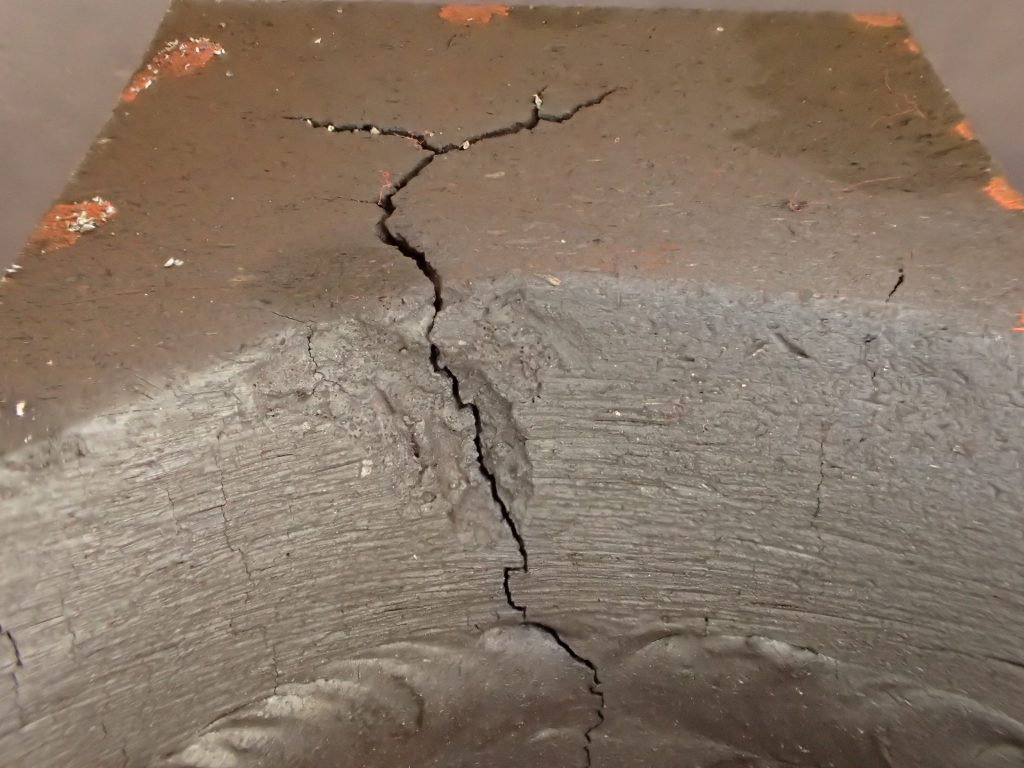The Fastest Way to Evaluate Stress Corrosion: Step Loading
US Corrosion is the leader in accelerated stress corrosion analysis because we developed the technique ourselves, working with our partners at Applied Fracture Mechanics. We offer a range of accelerated stress corrosion testing capabilities that can rapidly provide quantitative data and help you make informed engineering decisions. US Corrosion also provides routine batch-by-batch testing that can help assist your quality control and make sure you’re working with the right materials.
What is Stress Corrosion Cracking?
Stress corrosion cracking (SCC) is a type of corrosion that can occur in materials under tensile stress, particularly in the presence of a corrosive environment. SCC typically occurs when a material is exposed to a combination of tensile stress and a corrosive environment, such as saltwater, acidic solutions, or high-temperature gases. SCC can occur in a variety of materials, including metals, polymers, and ceramics, and can cause catastrophic failure of structural components if not detected and addressed. SCC can be difficult to detect and predict, as it often occurs without visible signs of corrosion or deformation.
The mechanisms of SCC are complex and depend on a variety of factors, including the material composition, the magnitude and duration of the applied stress, and the chemical and physical properties of the corrosive environment. SCC can occur through several mechanisms, such as hydrogen embrittlement, corrosion-fatigue, and environmentally assisted cracking.
Preventing SCC requires a combination of materials selection, design, and maintenance strategies. Materials with high resistance to SCC, such as certain stainless steels and titanium alloys, may be selected for use in environments prone to SCC. Design strategies such as reducing stress concentrations and avoiding corrosive environments can also help to prevent SCC. Maintenance strategies such as regular inspection and monitoring can help to detect and address SCC before it leads to catastrophic failure.
Overall, SCC is a serious and complex form of corrosion that can cause significant damage to structural components. Preventing SCC requires a comprehensive approach that considers materials selection, design, and maintenance strategies.
The Fastest Way to Evaluate Stress Corrosion Quantitatively
One of the fastest ways to evaluate susceptibility to stress corrosion is to perform accelerated tests in a laboratory environment. Such tests involve exposing a material to a corrosive environment under a controlled level of tensile stress for a short period of time, typically a few days or weeks. The test results can provide an indication of the susceptibility of the material to SCC under the tested conditions.
Accelerated SCC testing
By combining the rising step load method with other existing techniques, we are able to rapidly and quantitatively measure stress corrosion in a wide range of alloys and environments.
Other Methods to Evaluate SCC
Another technique that can be used to quickly evaluate SCC is to perform non-destructive testing, such as ultrasonic testing or eddy current testing, to detect cracks or other defects in a material. These techniques can provide a quick and non-invasive way to detect the presence of SCC and assess its severity. In addition to these techniques, visual inspection can also provide a quick way to evaluate the extent of SCC. In some cases, the presence of SCC can be detected through visual inspection of the surface of a material, particularly if there are visible signs of cracking or corrosion.
Overall, while there is no single method for evaluating SCC, there are several techniques that can be used to quickly assess the susceptibility of a material to SCC or detect its presence. These techniques can be useful in identifying potential issues and determining the need for further evaluation or maintenance.
How to Test for Stress Corrosion Cracking Accurately
Most typical stress corrosion tests take weeks or months, and only provide a pass-fail at the end. In comparison, the Rising Step Load (RSL) method will provide the fastest quantitative stress corrosion cracking test possible. RSL provides a quantitative SCC analysis, capable of determining the SCC threshold much more rapidly than other common tests.
There are also laboratory tests that can be used to evaluate SCC after it occurs, including optical microscopy, electron microscopy and ASTM standard methods:
Others standards are designed to evaluate SCC before it occurs:
ASTM G39 is for stress corrosion, and also often used for stress corrosion cracking. Often used for sour stress corrosion, this method is widely applicable to stress corrosion in many circumstances and environments. We also offer a modified accelerated method which combines the G39 and F1624 methodologies.
ASTM F945 are designed to test chemicals that are being used for cleaning or other purposes.
Often stress corrosion cracks are branching cracks with an intergranular corrosion path; however, in different materials SCC may also be observed as single cracks with either intergranular or trans granular nature.

How to Prevent Stress Corrosion Cracking:
Preventing stress corrosion cracking requires a combination of materials selection, design, and maintenance strategies. Here are some effective ways to prevent SCC:
- Using non-susceptible materials as determined by laboratory testing like RSL and batch-per-batch testing of heats of materials,
- Preventing exposure to corrosive chemicals – reducing exposure to corrosive acids and bases can help prevent stress corrosion, and
- Reducing stress by modifying welds, performing stress relief heat treatments, using lower-strength materials, design improvements, and more.
In general, preventing SCC requires a comprehensive approach that considers the material selection, design, and maintenance strategies. By incorporating these strategies, the risk of SCC can be minimized, and the safety and longevity of structures and components can be improved.
Stress Corrosion Case Study
In the case below, severe caustic stress corrosion cracking occurred in the presence of sodium hydroxide. The high levels of stress near the weld provided the necessary stress and an upset condition resulted in exposure to caustic sodium hydroxide. At that point, it was just a matter of time for the cracks to initiate and grow.

Our experts have dealt with many forms of stress corrosion, and we would love to help you, too.